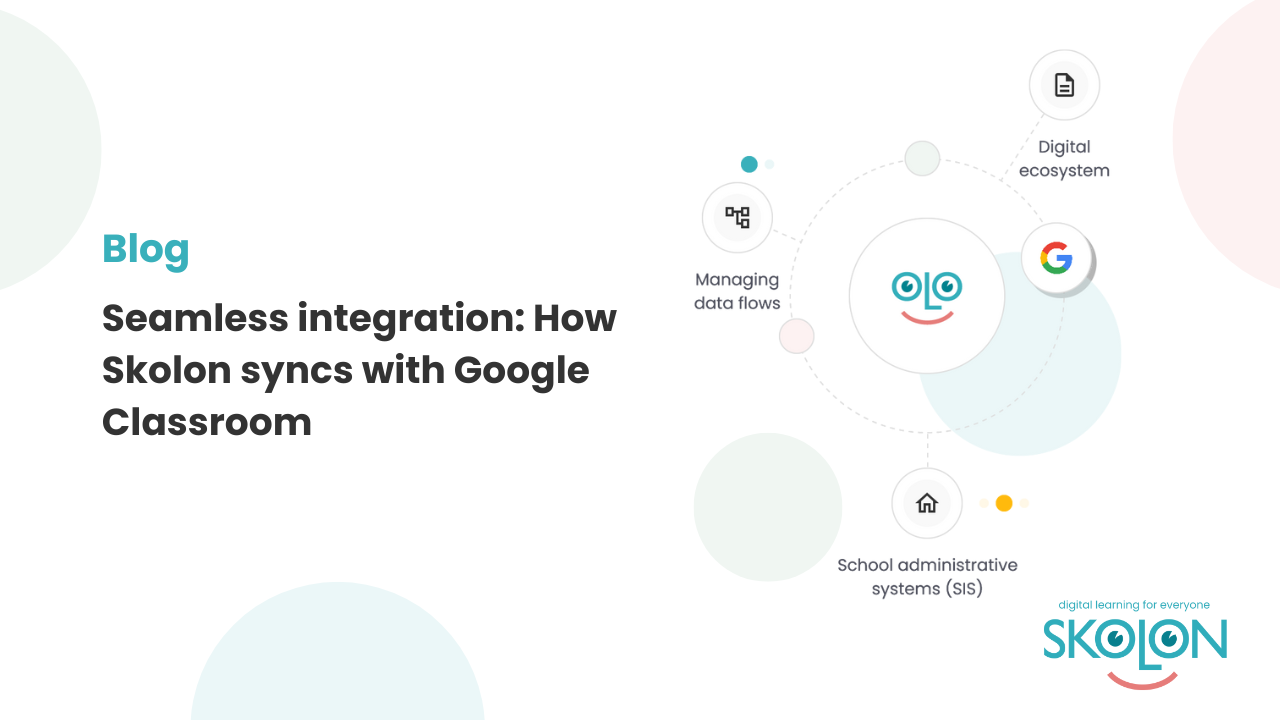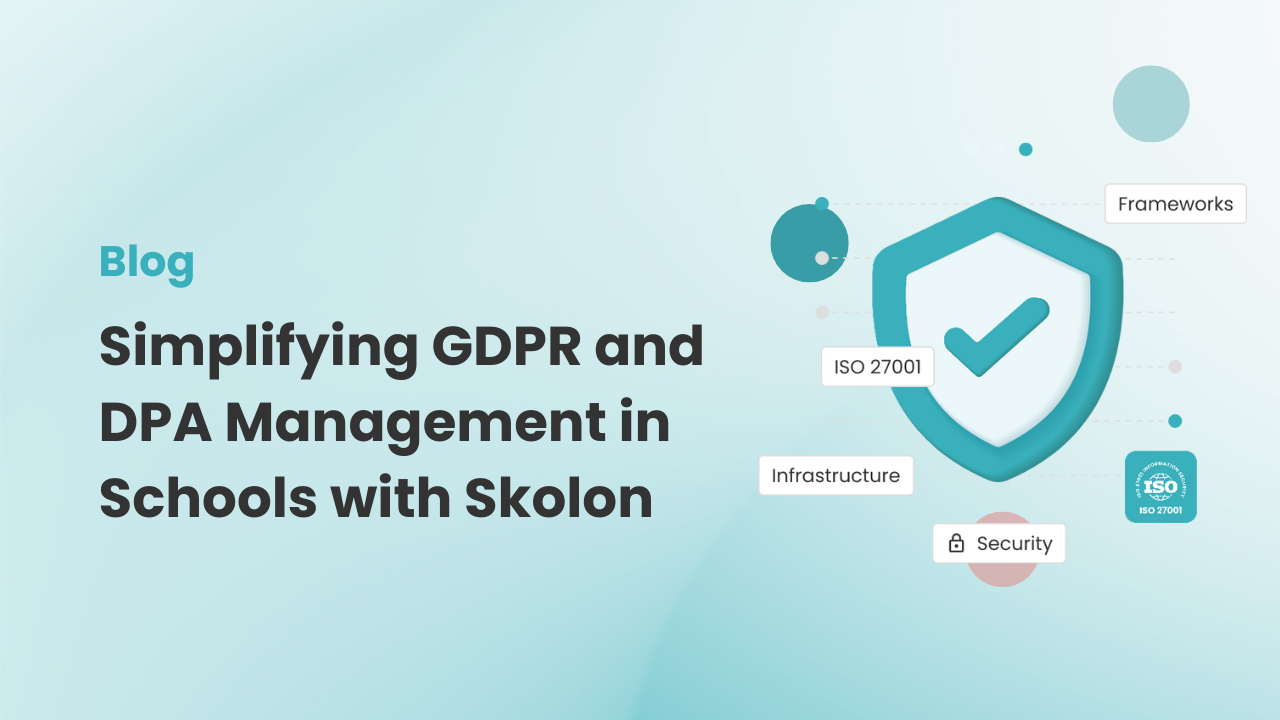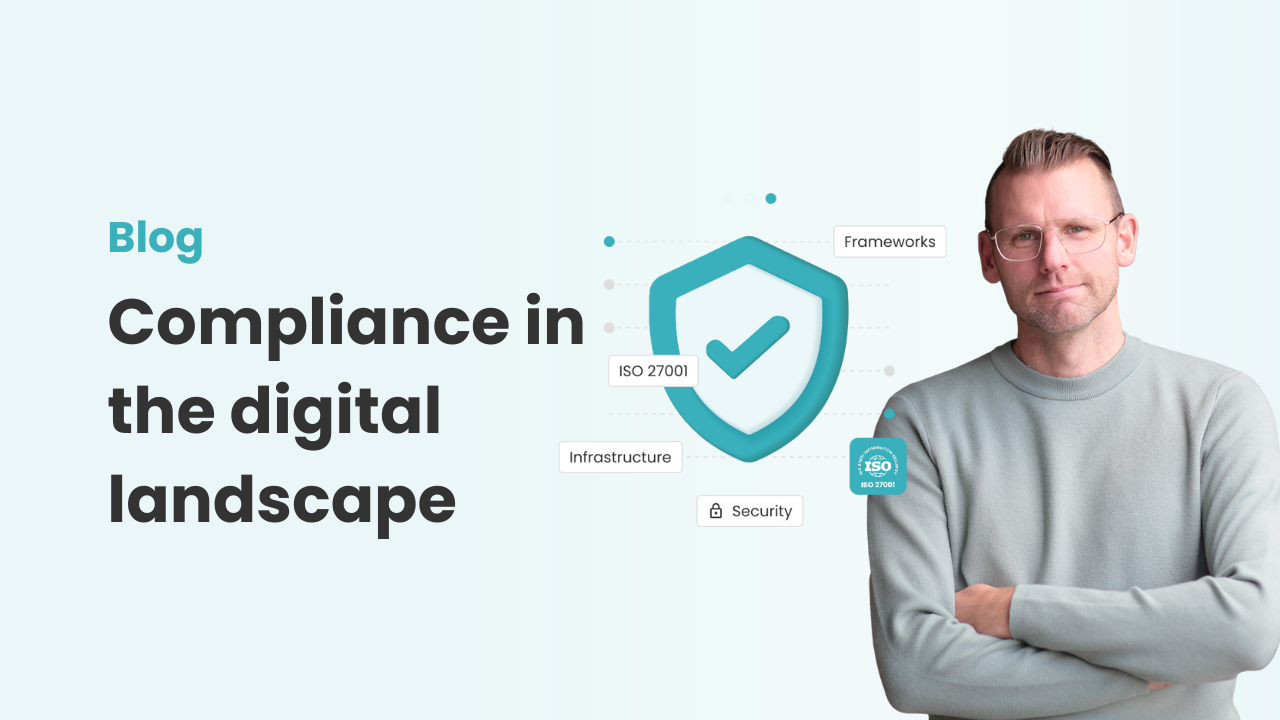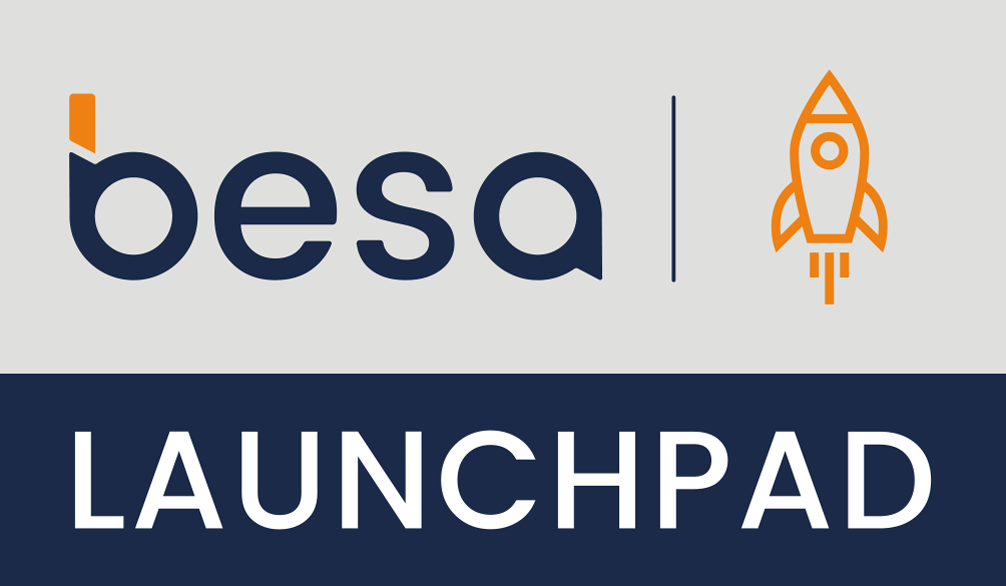Introducing AI to primary aged students
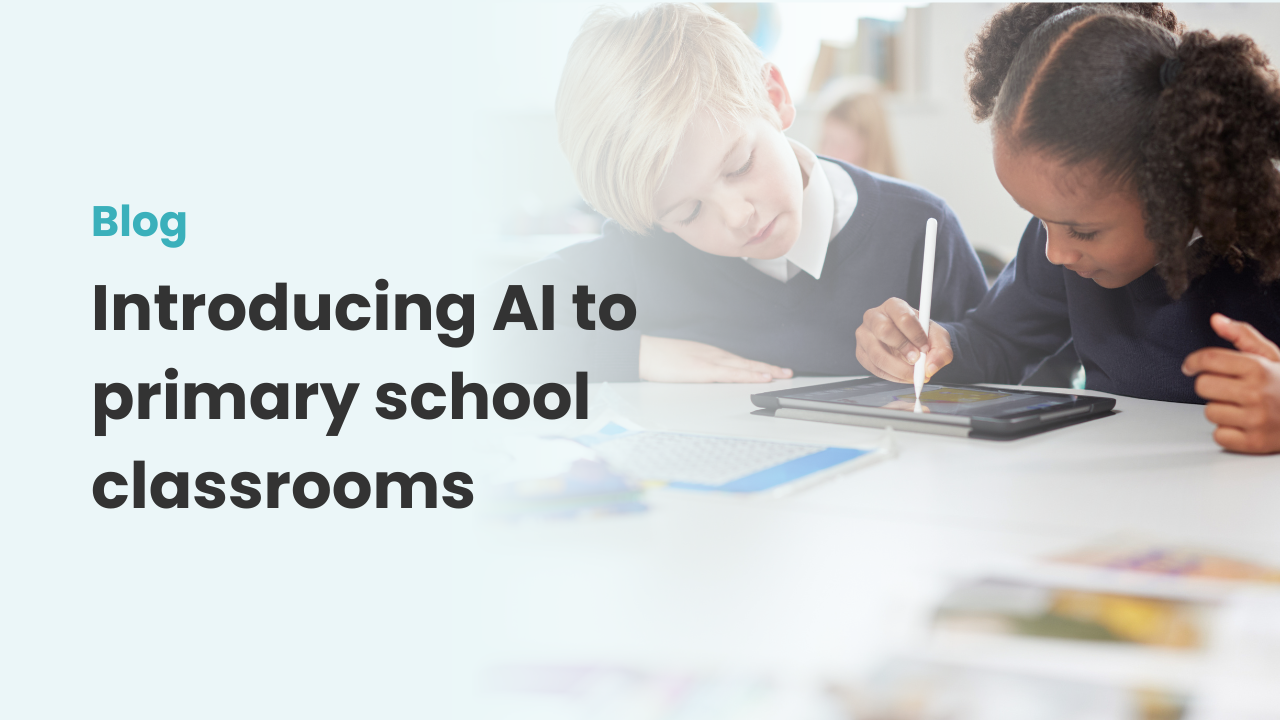

Artificial Intelligence (AI) has been a buzzword since early 2023, but while AI dates back to the 1950s, it has been transforming the world around us more prolifically in recent years.
From voice assistants like Alexa, to recommendation engines on Netflix and advanced medical diagnostics, AI has seamlessly integrated into everyday life, revolutionising industries and reshaping how we interact with technology.
Whilst AI may seem complex, especially with the mention of its use in advanced medicine, introducing it to primary-aged students is possible, highly beneficial and subsequently, very recommended.
By giving children the opportunity to learn about and understand the technology that is shaping their future, teachers can inspire a passion for innovation and creativity, while sparking an interest in digital literacy, problem-solving, and critical thinking.
Read on to learn about the practicalities and benefits for you as an educator to introduce AI to your pupils whilst making AI concepts engaging, accessible, and fun for younger students.
Skolon offers a seamless, efficient platform for MATs and schools to manage, acquire, and distribute digital tools and educational content, making it easier than ever to stay organised and prepared for the academic year ahead. Here’s how Skolon can benefit your school as you make those all-important back-to-school purchases:
Why teach AI to primary school aged children?
AI is not going anywhere, and it’s no longer a futuristic concept; it’s an integral part of our daily lives, therefore teaching AI to primary-aged students equips them with skills that will not only be vital today, but tomorrow too with regards to the future job market.
Learning about AI also encourages creativity and curiosity, allowing students to see the possibilities of technology beyond simply being users. Additionally, introducing AI at an early age helps demystify the concept, promoting an understanding of how it works and the chance to develop an early understanding of its ethical implications.
Introducing AI to classrooms will also benefit you, their teacher
AI allows for a more personalised approach to teaching by fostering creativity and helping to create a better learning environment. By reducing the amount of time you as a teacher spend on doing administrative tasks, AI enables you to focus on what you do best– teaching and supporting your pupils.
Tools such as Skolon’s AI-powered platform, Skolup, can automate time-consuming administrative tasks, personalise lessons based on individual student needs, and manage digital resources more efficiently. By embracing AI, teachers can focus more on impactful teaching and less on manual tasks, ensuring they stay ahead of digital trends while better preparing students for a future shaped by technology.
Furthermore, the UK Government is also supportive of AI usage in the classroom by investing in research to aid implementation. Minister for Early Education Stephen Morgan said: “We are determined to break down the barriers to opportunity to ensure every child can get the best possible education… Artificial intelligence, when made safe and reliable, represents an exciting opportunity to give our schools leaders and teachers a helping hand with classroom life.”
Mr Morgan further explained by stating: “…this investment will allow us to safely harness the power of tech to make it work for our hard-working teachers, easing the pressures and workload burdens we know are facing the profession and freeing up time, allowing them to focus on face-to-face teaching.”
How to introduce AI in the classroom
One of the best ways to introduce AI in the classroom is exploring the concepts alongside your students. In doing so, you’ll develop new strategies for teaching complex subjects in addition to fostering a more tech-savvy learning environment whilst ascertaining your pupil’s level of AI understanding.
This, in turn, will help you to stay ahead of digital trends, making it easier to personalise lessons, automate administrative tasks, and better prepare students for a future where AI will play a critical role. Embracing AI in education ultimately strengthens both teaching practices and student outcomes.
Introducing AI to your pupils will also benefit you by saving valuable time and streamlining day-to-day tasks. As an educator exploring AI concepts alongside your students, you’ll unlock new strategies for teaching complex subjects while fostering a tech-savvy learning environment.
Strategies for introducing AI concepts into the classroom
To safely implement AI into the classroom, going in with a set of thought-out strategies will not only enhance your students’ understanding of AI, but it will also offer you creative and engaging ways to integrate technology into your lessons, making the learning process more interactive and meaningful while reducing the burden of traditional teaching methods.
Start with the basics
Begin by explaining AI in simple terms: AI is a type of computer program that can learn from experience and perform tasks that usually require human intelligence. Share a list of all of the common household and scholarly items that use AI and ask students to write down which ones they’ve used, how they used them, why they use them and whether they are enjoyed using them. The goal is to show that AI isn’t magic but rather a tool that follows their commands.
Incorporate AI into play-based learning
Introducing new elements may feel less easier for the students to understand when games and activities are used to introduce AI concepts. For example, you can create a role-playing game where students act as AI robots, following commands to accomplish tasks. This helps them understand how AI operates by processing instructions and data. Digital tools like code.org’s AI for Oceans or Google’s Teachable Machine allow students to build basic AI models through interactive play.
Leverage storytelling
Storytelling can be a powerful way to explain AI. Use stories to illustrate AI concepts, such as a robot learning to clean a room or a computer helping a scientist solve a problem. You can also encourage students to create their own stories using AI to give them inspiration or guide their inspiration to a structure that they can complete.
Introduce ethical discussions
Ensuring that students use AI ethically can begin at a young age. Pose simple questions like, “Should machines be allowed to make decisions for us?” or “What happens if a machine makes a mistake?”
These questions have the propensity to spark discussions to help students develop a critical understanding of AI’s impact on society.
Use age-appropriate tools
There are several AI-related tools designed specifically for younger learners available on Skolon. Click here to view our library!
In summation, introducing AI to primary school classrooms is not only beneficial for students but also teachers and administrators, too. It’s an integration that can aid lessons, inspire curiosity and creativity, as well as critical thinking.
For teachers, AI-powered tools like Skolon’s platform can save time by automating routine tasks and helping to personalise learning experiences, allowing more focus on teaching. With AI becoming a cornerstone of modern education, embracing its potential now will enhance both student engagement and teaching efficiency. As you explore AI in the classroom, you’ll find that it’s not just about technology—it’s about transforming how students learn and how teachers teach, ensuring everyone benefits from the future of education.
How to Get Started with Skolup
For those without a Skolon account:
Are you working with digital strategy and digital transformation at a school or MAT and interested in learning more about Skolup and how to try it? Please contact us, and we’ll tell you more!
For Skolon Users:
Our AI tool Skolup is fully integrated with Skolon. It’s easy to try a free demo and buy exactly the number of licenses you need for your class or entire school. After purchasing, you can start using Skolup right away!
This is Skolon – we gather the best digital educational tools and make them work in the classroom.
Skolon is an independent platform for digital educational tools and learning resources, created for both teachers and students. With Skolon, accessing and using your digital educational tools is easy – security increases, administration decreases, and there’s more time for learning.
The digital educational tools come from both small and large providers, all of whom have one thing in common – they create digital educational tools that are beneficial for the school environment.
Information
Share this story
Subscribe
Would you like our newest articles delivered to your inbox? Sign up now!
Artificial Intelligence (AI) has been a buzzword since early 2023, but while AI dates back to the 1950s, it has been transforming the world around us more prolifically in recent years.
From voice assistants like Alexa, to recommendation engines on Netflix and advanced medical diagnostics, AI has seamlessly integrated into everyday life, revolutionising industries and reshaping how we interact with technology.
Whilst AI may seem complex, especially with the mention of its use in advanced medicine, introducing it to primary-aged students is possible, highly beneficial and subsequently, very recommended.
By giving children the opportunity to learn about and understand the technology that is shaping their future, teachers can inspire a passion for innovation and creativity, while sparking an interest in digital literacy, problem-solving, and critical thinking.
Read on to learn about the practicalities and benefits for you as an educator to introduce AI to your pupils whilst making AI concepts engaging, accessible, and fun for younger students.
Skolon offers a seamless, efficient platform for MATs and schools to manage, acquire, and distribute digital tools and educational content, making it easier than ever to stay organised and prepared for the academic year ahead. Here’s how Skolon can benefit your school as you make those all-important back-to-school purchases:
Why teach AI to primary school aged children?
AI is not going anywhere, and it’s no longer a futuristic concept; it’s an integral part of our daily lives, therefore teaching AI to primary-aged students equips them with skills that will not only be vital today, but tomorrow too with regards to the future job market.
Learning about AI also encourages creativity and curiosity, allowing students to see the possibilities of technology beyond simply being users. Additionally, introducing AI at an early age helps demystify the concept, promoting an understanding of how it works and the chance to develop an early understanding of its ethical implications.
Introducing AI to classrooms will also benefit you, their teacher
AI allows for a more personalised approach to teaching by fostering creativity and helping to create a better learning environment. By reducing the amount of time you as a teacher spend on doing administrative tasks, AI enables you to focus on what you do best– teaching and supporting your pupils.
Tools such as Skolon’s AI-powered platform, Skolup, can automate time-consuming administrative tasks, personalise lessons based on individual student needs, and manage digital resources more efficiently. By embracing AI, teachers can focus more on impactful teaching and less on manual tasks, ensuring they stay ahead of digital trends while better preparing students for a future shaped by technology.
Furthermore, the UK Government is also supportive of AI usage in the classroom by investing in research to aid implementation. Minister for Early Education Stephen Morgan said: “We are determined to break down the barriers to opportunity to ensure every child can get the best possible education… Artificial intelligence, when made safe and reliable, represents an exciting opportunity to give our schools leaders and teachers a helping hand with classroom life.”
Mr Morgan further explained by stating: “…this investment will allow us to safely harness the power of tech to make it work for our hard-working teachers, easing the pressures and workload burdens we know are facing the profession and freeing up time, allowing them to focus on face-to-face teaching.”
How to introduce AI in the classroom
One of the best ways to introduce AI in the classroom is exploring the concepts alongside your students. In doing so, you’ll develop new strategies for teaching complex subjects in addition to fostering a more tech-savvy learning environment whilst ascertaining your pupil’s level of AI understanding.
This, in turn, will help you to stay ahead of digital trends, making it easier to personalise lessons, automate administrative tasks, and better prepare students for a future where AI will play a critical role. Embracing AI in education ultimately strengthens both teaching practices and student outcomes.
Introducing AI to your pupils will also benefit you by saving valuable time and streamlining day-to-day tasks. As an educator exploring AI concepts alongside your students, you’ll unlock new strategies for teaching complex subjects while fostering a tech-savvy learning environment.
Strategies for introducing AI concepts into the classroom
To safely implement AI into the classroom, going in with a set of thought-out strategies will not only enhance your students’ understanding of AI, but it will also offer you creative and engaging ways to integrate technology into your lessons, making the learning process more interactive and meaningful while reducing the burden of traditional teaching methods.
Start with the basics
Begin by explaining AI in simple terms: AI is a type of computer program that can learn from experience and perform tasks that usually require human intelligence. Share a list of all of the common household and scholarly items that use AI and ask students to write down which ones they’ve used, how they used them, why they use them and whether they are enjoyed using them. The goal is to show that AI isn’t magic but rather a tool that follows their commands.
Incorporate AI into play-based learning
Introducing new elements may feel less easier for the students to understand when games and activities are used to introduce AI concepts. For example, you can create a role-playing game where students act as AI robots, following commands to accomplish tasks. This helps them understand how AI operates by processing instructions and data. Digital tools like code.org’s AI for Oceans or Google’s Teachable Machine allow students to build basic AI models through interactive play.
Leverage storytelling
Storytelling can be a powerful way to explain AI. Use stories to illustrate AI concepts, such as a robot learning to clean a room or a computer helping a scientist solve a problem. You can also encourage students to create their own stories using AI to give them inspiration or guide their inspiration to a structure that they can complete.
Introduce ethical discussions
Ensuring that students use AI ethically can begin at a young age. Pose simple questions like, “Should machines be allowed to make decisions for us?” or “What happens if a machine makes a mistake?”
These questions have the propensity to spark discussions to help students develop a critical understanding of AI’s impact on society.
Use age-appropriate tools
There are several AI-related tools designed specifically for younger learners available on Skolon. Click here to view our library!
In summation, introducing AI to primary school classrooms is not only beneficial for students but also teachers and administrators, too. It’s an integration that can aid lessons, inspire curiosity and creativity, as well as critical thinking.
For teachers, AI-powered tools like Skolon’s platform can save time by automating routine tasks and helping to personalise learning experiences, allowing more focus on teaching. With AI becoming a cornerstone of modern education, embracing its potential now will enhance both student engagement and teaching efficiency. As you explore AI in the classroom, you’ll find that it’s not just about technology—it’s about transforming how students learn and how teachers teach, ensuring everyone benefits from the future of education.
How to Get Started with Skolup
For those without a Skolon account:
Are you working with digital strategy and digital transformation at a school or MAT and interested in learning more about Skolup and how to try it? Please contact us, and we’ll tell you more!
For Skolon Users:
Our AI tool Skolup is fully integrated with Skolon. It’s easy to try a free demo and buy exactly the number of licenses you need for your class or entire school. After purchasing, you can start using Skolup right away!
This is Skolon – we gather the best digital educational tools and make them work in the classroom.
Skolon is an independent platform for digital educational tools and learning resources, created for both teachers and students. With Skolon, accessing and using your digital educational tools is easy – security increases, administration decreases, and there’s more time for learning.
The digital educational tools come from both small and large providers, all of whom have one thing in common – they create digital educational tools that are beneficial for the school environment.
Share this story
Subscribe
Would you like our newest articles delivered to your inbox? Sign up now!


